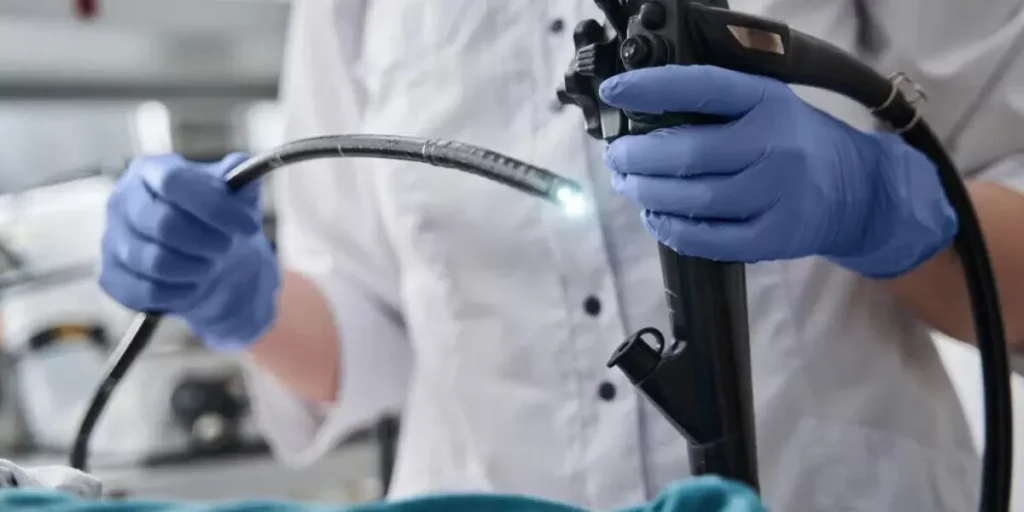Medicine constantly evolves, offering innovative ways to diagnose and treat complex conditions. Diagnostic imaging techniques stand at the forefront of this progress, providing invaluable insights into various bodily systems. Among these techniques, Pancreatography is a vital tool in assessing pancreatic health and detecting related disorders.
This sophisticated imaging technique provides intricate details about the pancreas, shedding light on various conditions affecting this crucial organ. From evaluating pancreatic ducts to identifying potential abnormalities, Pancreatography is pivotal in diagnosing a spectrum of diseases and disorders. This article will discuss all you need to know about Pancreatography.
What is Pancreatography?
Pancreatography is an operation that specialists use to look at your pancreas. It resembles taking photos of your pancreas utilizing an exceptional color and X-beams. This assists them with checking whether there are any issues, similar to blockages or aggravation.
Pancreatography is fundamental for diagnosing and treating issues with your pancreas, an imperative organ in your body that assists with processing and controlling glucose.
What Are The Types Of Pancreatography?
There are several types of pancreatography, each offering different ways to examine your pancreas. Here’s a brief overview of three standard methods:
1. Endoscopic Retrograde Pancreatography (ERCP)
ERCP is a methodology that consolidates endoscopy and X-beams to look at the pancreas and bile channels. During the strategy, a slight, adaptable cylinder with a camera goes through your mouth and into your small digestive tract.

A special dye is injected, making the pancreas and bile ducts visible on X-ray images. Doctors use ERCP to diagnose and treat issues like gallstones, blockages, or inflammation in the pancreas or bile ducts.
2. Magnetic Resonance Cholangiopancreatography (MRCP)
MRCP is a painless imaging method that utilises attractive reverberation imaging (X-ray) to make point-by-point pictures of the pancreas, bile conduits, and encompassing designs. Not at all like ERCP, MRCP requires no cylinders or infusions.
All things being equal, it utilizes areas of strength for a field and radio waves to produce excellent pictures. MRCP distinguishes anomalies, like growths, pimples, or blockages in the pancreas and bile conduits, without obtrusive techniques.
3. Computed Tomography Pancreatography (CTP)
CTP is a computed tomography (CT) scan focused explicitly on the pancreas and nearby organs. During a CTP, X-ray equipment rotates around your body, capturing multiple images combined to create detailed cross-sectional images.
A contrast dye may be injected into a vein to enhance the visibility of the pancreas and surrounding structures. CTP provides clear images of the pancreas and helps doctors identify issues such as tumors, inflammation, or pancreatic cysts.
How To Prepare For Pancreatography?
Preparing for a pancreatography procedure is essential to ensure accurate results and your safety. Here’s what you need to know:
1. Fasting Instructions
You will likely be asked not to eat or drink for several hours before the procedure. Fasting helps in getting clear images of your pancreas and digestive system.
2. Medication Review
Tell your doctor about any medications, especially blood thinners or supplements. Your doctor might adjust your medication schedule before the test.
3. Allergies And Medical History
Inform your healthcare provider about your allergies, especially to iodine-based contrast dyes. Also, share your medical history, including past surgeries and existing health conditions.
Also Read:- What Is Cholangiography? A Window Into The Biliary System
4. Arrange Transportation
Since you might be given sedatives during some pancreatography procedures, it’s essential to arrange for someone to drive you home afterwards. Sedatives can make you tired, so it’s not safe to drive yourself.
5. Follow Doctor’s Instructions
Listen carefully to your doctor’s specific instructions. They might have additional guidelines based on the type of pancreatography you’re having. Following their advice ensures the procedure goes smoothly and safely.
Conclusion
Pancreatography is an important way to examine the pancreas and find problems. It helps doctors see if there are blockages, tumours, or other issues in the pancreas. By using this method, doctors can find and treat pancreatic diseases early. As technology improves, Pancreatography keeps improving, making it easier for doctors to help patients.
It’s a valuable tool that helps diagnose and treat problems with the pancreas, making a big difference in people’s health. It’s likely to keep getting better and stay vital in the future for helping doctors take care of patients’ pancreatic issues.